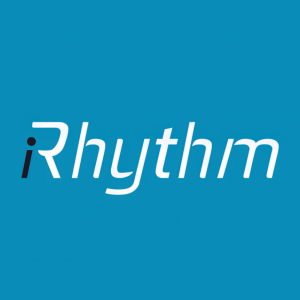Newly Published Research Shows 14-Day Monitoring Detected Almost Three Times More Nonsustained Ventricular Tachycardia Than Standard 48-Hour Monitoring in Patients with Hypertrophic Cardiomyopathy
Rhea-AI Summary
iRhythm Technologies (NASDAQ:IRTC) announced research results showing that 14-day monitoring using Zio® XT patch detected nearly three times more nonsustained ventricular tachycardia (NSVT) compared to standard 48-hour monitoring in patients with hypertrophic cardiomyopathy (HCM). The study found that 48% of HCM patients experienced NSVT episodes during the 14-day period, with 63% of these episodes detected only after 48 hours. High-risk NSVT was detected in 24% of patients, representing a 3-fold greater diagnostic yield compared to 48-hour monitoring. The findings suggest that traditional short-term monitoring may miss significant cardiac events that could indicate increased risk of sudden cardiac death.
Positive
- 14-day monitoring showed 2.7x higher diagnostic yield for NSVT detection compared to 48-hour monitoring (48% vs 18%)
- Detection of high-risk NSVT was 3.0x greater over 14 days vs 48 hours (24% vs 8%)
- Study demonstrates superior effectiveness of company's Zio® XT patch for extended monitoring
Negative
- None.
News Market Reaction 1 Alert
On the day this news was published, IRTC gained 0.82%, reflecting a mild positive market reaction.
Data tracked by StockTitan Argus on the day of publication.
- Hypertrophic cardiomyopathy (HCM) is a genetic heart condition affecting about 1 in 500 people and is one of the leading causes of sudden cardiac death (SCD) in people under 35, including among athletes.1
- NSVT (nonsustained ventricular tachycardia), a known marker for increased risk of SCD in HCM, was detected in nearly
50% of HCM patients in the study undergoing long-term continuous ambulatory ECG monitoring of up to 14 days with a Zio® XT LTCM ECG patch device;63% of NSVT episodes detected only after 48 hours, suggesting that Holter monitoring would miss the majority of episodes. - NSVT episodes clinically judged to be higher risk were identified in
24% of the study population and were detected more frequently during 14-day monitoring (3-fold greater diagnostic yield vs 48 hours).
SAN FRANCISCO, Oct. 28, 2024 (GLOBE NEWSWIRE) -- iRhythm Technologies, Inc. (NASDAQ:IRTC), a leading digital health company focused on creating trusted solutions that detect, predict, and prevent disease, today announced that the results of the Extended Ambulatory ECG Monitoring Enhances Identification of Higher-Risk Ventricular Tachyarrhythmias in Patients with Hypertrophic Cardiomyopathy (EXAMINE-HCM) study have been published in Heart Rhythm Journal. The findings were also presented at the Heart Rhythm Society’s annual meeting in 2023, and most recently, at the International HCM Summit 8 in Boston, MA (October 25-28, 2024).
The newly published research highlights the value of 14-day long-term, uninterrupted2 continuous monitoring (LTCM), using a Zio® XT patch ECG device, for detecting nonsustained ventricular tachycardia (NSVT), a known marker for sudden cardiac death (SCD) in patients with hypertrophic cardiomyopathy (HCM). The findings support more informed decisions about care pathways and interventions, particularly by capturing arrhythmias that would go undetected by standard 48-hour monitoring, such as with a conventional Holter device monitoring period. Prior research has demonstrated that NSVT episodes occurring with higher heart rate, longer duration, and greater frequency are associated with increased risk of SCD3 and practice guidelines place greater emphasis on these episodes (8 consecutive beats, >200 bpm, 2 runs in consecutive 2-day period) in clinical decision-making regarding use of primary prevention implantable cardioverter-defibrillator (ICD).4 These NSVT episodes clinically judged to be higher risk were detected in only
“The EXAMINE-HCM study provides important new insights into how we manage patients with hypertrophic cardiomyopathy identified with ventricular arrhythmias,” said Martin S. Maron, MD, study lead investigator, HCM expert, and Medical Director, Hypertrophic Cardiomyopathy Center, Lahey Hospital and Medical Center. “By extending the monitoring period beyond the traditional 48 hours, we have been able to detect nonsustained ventricular tachycardia episodes that may have otherwise gone undetected with traditional shorter monitoring periods, which may offer the potential to inform more tailored clinical decision-making to help prevent sudden cardiac death in this high-risk population.”
Overall, the study authors concluded that traditional 48-hour short-term cardiac monitoring is significantly less effective compared to extended 14-day continuous monitoring for both NSVT and NVST detection with features judged to be high risk in patients with HCM. These data support the need for additional clinical studies to evaluate the significance of longer-term monitoring for NSVT detection and relationship to future risk for sudden death in HCM.
Key findings from the Extended Ambulatory ECG Monitoring Enhances Identification of Higher-Risk Ventricular Tachyarrhythmias in Patients with Hypertrophic Cardiomyopathy study:
48% of study patients (n=114) with HCM experienced NSVT episodes, and high-risk NSVT was detected in24% (n=56) of study patients during the 14-day monitoring period.63% of NSVT episodes (n=72) were detected during a 3 to 14-day continuous monitoring period, compared to37% (n=42) of NSVT episodes detected during the standard 48-hour Holter monitoring period. This resulted in a 2.7-fold higher diagnostic yield for detecting NSVT during the 14-day extended monitoring period compared to the initial 48 hours (48% vs.18% ; p<0.001).64% of NSVT episodes clinically judged to be higher risk (n=36); 8 consecutive beats, >200 bpm, 2 runs in consecutive 2-day period)) were detected during a 3 to 14-day continuous monitoring period, compared to36% (n=20) of high-risk NSVT episodes detected during the standard 48-hour Holter monitoring period. Therefore, the diagnostic yield of high-risk NSVT was 3.0-fold greater over the entire 2 weeks of monitoring vs. only the first 48 hours (24% vs.8% ; p<0.001).17% of patient profiles were re-classified with respect to risk of sudden cardiac death (n=40) based on their extended 14-day continuous monitoring period. The number of patients at high-risk for SCD increased 2.3-fold (95% CI: 1.2, 4.3) vs. 48-hour monitoring, with 18 (8% ) of study patients reclassified from low- or intermediate-risk to high-risk for SCD. In addition, 22 (9% ) of patients were reclassified from low to intermediate risk.
Importance of Detecting NSVT in HCM Patients
HCM is a genetic condition that affects approximately 1 in 500 people and one of the leading causes of sudden cardiac death (SCD), especially in individuals under 35, including among athletes. HCM is caused by mutations in genes controlling the production of heart muscle proteins, resulting in thickening of the left ventricle wall. These changes can impair the heart’s ability to pump blood efficiently and disrupt its electrical signaling. Nonsustained ventricular tachycardia (NSVT) is a well-recognized marker for SCD risk in patients with HCM.
Standard Holter monitoring captures only up to 48 hours of data, potentially missing episodes of NSVT that can occur later. This study shows that extended monitoring can detect NSVT that would otherwise go unnoticed, providing clinicians with clinical actionable information needed to make timely interventions such as implantable cardioverter-defibrillators (ICDs).
The findings underscore the importance of long-term continuous monitoring (LTCM) for patients with HCM. By detecting NSVT that would otherwise go undetected, clinicians are better equipped to assess sudden cardiac death (SCD) risk and recommend interventions like ICD placement.
This study highlights the value of extended monitoring as an important tool for risk stratification in HCM patients, complementing current American Heart Association/American College of Cardiology guidelines, which recommend monitoring every 1 to 2 years but do not yet specify the optimal duration for detecting arrhythmias.
“There is an abundance of clinical evidence demonstrating that uninterrupted, continuous, patch-based monitoring with the Zio® long-term continuous monitoring service leads to increased diagnostic yield of Afib, atrial arrhythmias, ventricular arrhythmias, more accurate ectopic burden estimation, and lower rates of retesting,”5 said Mintu Turakhia, MD, iRhythm’s Chief Medical and Scientific Officer and EVP, Product Innovation. “This study adds to the evidence by showing how ascertainment of NSVT could be missed during risk stratification, in this case specifically for hypertrophic cardiomyopathy, depending on the diagnostic test being used.”
About the Study
The EXAMINE-HCM study was a single-center, prospective study focused on patients with hypertrophic cardiomyopathy (HCM), a common genetic heart disease and a leading cause of sudden cardiac death (SCD) in young adults. The study aimed to evaluate the prevalence and clinical profile of nonsustained ventricular tachycardia (NSVT), a key marker for SCD risk, using extended continuous ambulatory ECG monitoring. The primary goal was to assess the benefit of long-term monitoring compared to traditional 48-hour Holter monitoring, with a focus on NSVT episodes of longer duration, greater frequency, and occurring with a higher heart rate, which have been associated greater risk of SCD.
The study enrolled 236 consecutive adult patients diagnosed with HCM (mean age 49 ± 12 years;
NSVT was defined as more than 3 consecutive ventricular beats at a rate of ≥120 beats per minute (bpm) lasting for less than 30 seconds and terminating spontaneously. High-risk NSVT episodes were defined as those with one or more of the following: ≥8 consecutive beats, a rate of >200 bpm, or ≥2 runs within a 48-hour period, all of which are associated with a higher risk of SCD.
The study's primary objective was to compare the prevalence, burden, speed, and length of NSVT episodes detected during the initial 48-hour period (standard Holter monitoring) versus the full 14-day extended monitoring period.
Key outcomes included the detection of NSVT with features judged to be higher risk and its potential impact on SCD risk stratification. The European Society of Cardiology (ESC) SCD risk score was calculated based on both the 48-hour and full 14-day data, and patients were stratified into low, intermediate, and high-risk SCD categories over a 5-year period.
This project was supported by an investigator-initiated grant from iRhythm Technologies, Inc. Results presented are scientific data and not product or marketing claims.
Zio XT is indicated for use on patients who may be asymptomatic or who may suffer from transient symptoms such as palpitations, shortness of breath, dizziness, light-headedness, pre-syncope, syncope, fatigue or anxiety.
To learn more about the study, visit Heart Rhythm. To learn more about the value of the Zio LTCM service, which has been demonstrated in over 100 original scientific research manuscripts6, visit iRhythmTech.com..
About iRhythm Technologies, Inc.
iRhythm is a leading digital health care company that creates trusted solutions that detect, predict, and prevent disease. Combining wearable biosensors and cloud-based data analytics with powerful proprietary algorithms, iRhythm distills data from millions of heartbeats into clinically actionable information. Through a relentless focus on patient care, iRhythm’s vision is to deliver better data, better insights, and better health for all. To learn more about iRhythm, including its portfolio of Zio products and services, please visit irhythmtech.com.
Media Contact:
Kassandra Perry
irhythm@highwirepr.com
Investor Relations Contact:
Stephanie Zhadkevich
investors@irhythmtech.com
1 “Hypertrophic Cardiomyopathy (HCM).” Www.Heart.Org, American Heart Association, Aug. 2024, www.heart.org/en/health-topics/cardiomyopathy/what-is-cardiomyopathy-in-adults/hypertrophic-cardiomyopathy.
2 “Uninterrupted” refers to uninterrupted ECG recording.
3 Wang W, Lian Z, Rowin EJ, Maron BJ, Maron MS, Link MS. Prognostic implications of nonsustained ventricular tachycardia in high-risk patients with hypertrophic cardiomyopathy. Circ Arrhythm Electrophysiol. 2017;10.
4 Ommen et al. 2024 AHA/ACC/AMSSM/HRS/PACES/SCMR Guideline for the Management of Hypertrophic Cardiomyopathy: A Report of the American Heart Association/American College of Cardiology Joint Committee on Clinical Practice Guidelines. Circulation. 2024 Jun 4;149(23):e1239-e1311.
5 Reynolds et al. Comparative effectiveness and healthcare utilization for ambulatory cardiac monitoring strategies in Medicare beneficiaries. Am Heart J. 2024;269:25–34. Accessed January 2, 2024. https://doi.org/10.1016/j.ahj.2023.12.002
6 Data on file. iRhythm Technologies, 2023: https://www.irhythmtech.com/providers/evidence/list-of-clinical-articles








